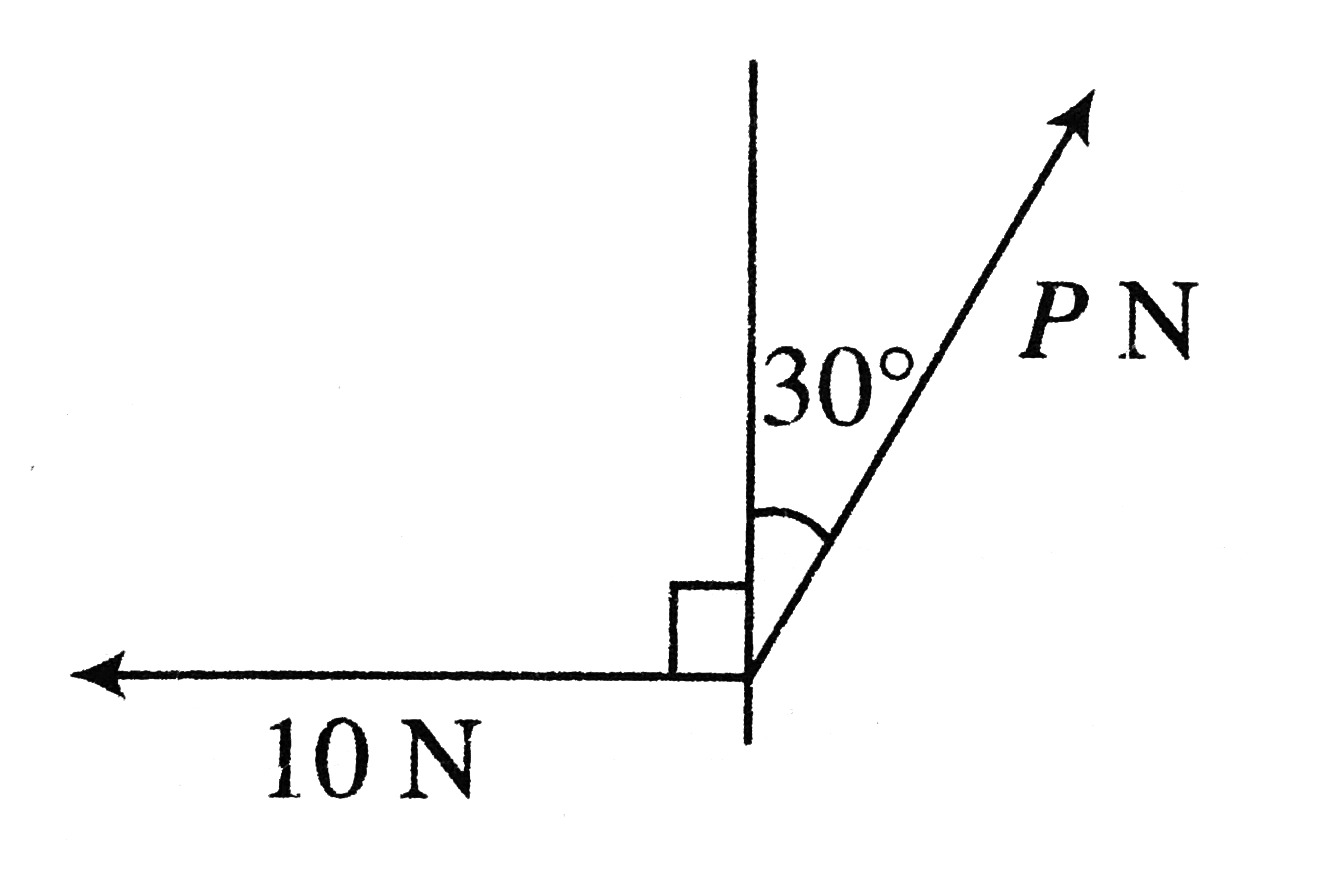Two perpendicular forces of magnitudes 10 N and 5 N act at a point. Find their resultant.
The correct Answer is:11.18 N , at an angle of 26.56∘ with 10 N force.
Step by step video, text & image solution for Two perpendicular forces of magnitudes 10 N and 5 N act at a point. Find their resultant. by Physics experts to help you in doubts & scoring excellent marks in Class 12 exams.
Topper's Solved these Questions
- BOOK - AAKASH INSTITUTECHAPTER - MOTION IN A PLANEEXERCISE - Assignement section -A Objective (one option is correct)50videos
MOTION IN A PLANE
- BOOK - AAKASH INSTITUTECHAPTER - MOTION IN A PLANEEXERCISE - Assignement section -B Objective (one option is correct)24videos
MOTION IN A PLANE
- BOOK - AAKASH INSTITUTECHAPTER - MOTION IN A PLANEEXERCISE - llustration 1 :1videos
MOTION IN A PLANE
- BOOK - AAKASH INSTITUTECHAPTER - MOCK_TEST_17EXERCISE - Example15videos
MOCK_TEST_17
- BOOK - AAKASH INSTITUTECHAPTER - MOTION IN A STRAIGHT LINEEXERCISE - ASSIGNMENT (SECTION - D)15videos
MOTION IN A STRAIGHT LINE
Similar Questions
Two forces of magnitudes "8N" and "15N" are acting at a point. the resultant force is 17 newton,then the angle between two forces is
View SolutionTwo parallel unlike forces of magnitudes 15 N and 10 N are acting at point A and B respectively. If C is the point of action of resultant, then AB/BC is
View Solution
Knowledge Check
- Question 1 - Select One
Two forces of magnitude 8 N and 15 N respectively act at a point . If the resultant force is 17 N , the angle between the forces has to be
A60∘B45∘C90∘D30∘ - Question 2 - Select One
Two forces of magnitudes 3 N and 5 N act at the same point on an object. Which one of the following equations will satisfy the magnitude of the resultant force R in newtons?
A2≤R≤5B2≤R≤8C3≤R≤5D2≤R≤3 - Question 3 - Select One
The resultant force of 5 N and 10 N can not be
A12 NB8 NC4 ND5 N
Two parallel unlike forces of magnitudes 15 N and 10 N are acting at point A and B respectively. If C is the point of action of resultant, then AB/BC is
View SolutionTwo horizontal forces of magnitudes of 10N and PN act on a particle. The force of magnitude 10N acts due west and the force of magnitude PN acts on a bearing of 30∘ east of north as shown in (figure) The resultant of these two force acts due north. Find the magnitude of the resultant.
 View Solution
View SolutionA body is acted upon by two forces of magnitudes 20 N and 30 N. Calculate the maximum and minimum value of resultant force on the body
View SolutionTwo constant forces 4 N and 5 N act on a body in opposite directions. Find the resultant force on the body.
View SolutionTwo constant forces 4 N and 5 N act on a body in opposite directions .Find the resultant force on the body
View Solution

